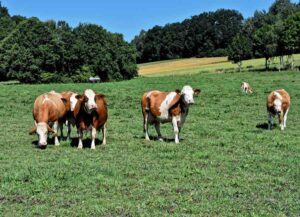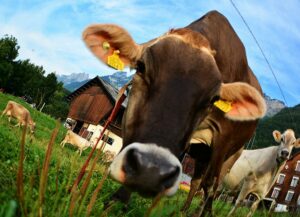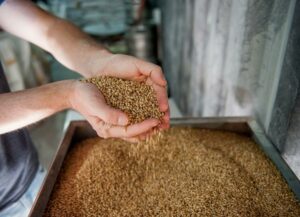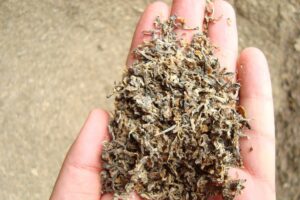Fernando Diaz
Methionine and lysine are the main limiting amino acids in lactating dairy cow diets. However, recent research shows histidine may be a limiting amino acid as well. A series of three studies (2015, 2016, 2017) conducted at The Pennsylvania State University’s Dairy Teaching and Research Center reported greater intake and milk protein yield in high-production cows fed low-protein diets supplemented with rumen-protected (RP) histidine.
In order to evaluate the effects of histidine supplementation in cow production performance, researchers from the University of New Hampshire, USA included incremental amounts of rumen-protected (RP)-His in a metabolizable protein-deficient diet for mid-lactation cows. The basal diet included corn silage as the main forage (50% in a dry matter basis; DM) in combination with grass/legume haylage (15% DM) and concentrates (35% DM). Protein, fiber (NDF) and energy contents in this diet were 15.1% DM, 34.8% DM, and 1.62 Mcal/kg of DM, respectively.
The researchers (Zang et al., 2019) supplemented the basal diet with 0, 82, 164, and 246 g/day of a prototype RP histidine product (44% of histidine with 14% bioavailability). Therefore, the experimental diets supplied 0, 5, 10, and 15 g/day of digestible histidine. According to the National Research Council software, dietary histidine represented 2.06, 2.28, 2.52, and 2.75% of metabolizable protein supply, respectively. In addition, diets included 0.05% of a commercial RP methionine product (75% dl-methionine and 80% bioavailability) which supplied 11 g/cow/day of RP methionine (6.6 g/day of digestible methionine). In summary, these were the main findings:
- The authors observed that supplemental RP histidine tended to increase milk yield linearly (from 31.2 to 32.7 kg day); however, energy- and fat-corrected-milk production did not improve by increasing histidine supply (average 31.5 and 33.8 kg/day, respectively).
- Dry matter intake averaged 22.0 kg/day and was not affected by histidine supplementation.
- Milk fat content and yield did not change across diets averaging 3.98% and 1.26 kg/day.
- Interestingly, milk protein yield was similar in cows fed diets containing 0, 82, and 164 g of RP histidine (0.93 kg/day) but increased significantly in cows supplemented with 246 g of histidine (0.98 kg/day). This indicates that lower histidine inclusion rates were not sufficient to stimulate milk protein synthesis. On the other hand, milk protein concentration (2.98%) was unaffected by histidine supplementation.
- Concentrations of milk urea nitrogen increased linearly from 11.5 to 13.2 mg/dL by increasing histidine levels.
In conclusion, this study showed that only a high dose of RP histidine improved milk protein yield. Other production parameters were not altered by histidine supplementation. It should be noted that the cows used in this study did not show high production performance so their amino acid requirement may be covered with the basal diet. In addition to amino acid supplementation, other factors such as nutrient composition of the diets, production level or days in milk should be considered.
Reference
Zang, L. H. P. Silva, M. Ghelichkhan, M. Miura, N. L. Whitehouse, M. L. Chizzotti, and A. F. Brito. 2019. Incremental amounts of rumen-protected histidine increase plasma and muscle histidine concentrations and milk protein yield in dairy cows fed a metabolizable protein-deficient diet. J. Dairy Sci. 102:4138–4154.
© 2019 Dairy Knowledge Center, LLC. All Rights Reserved.









